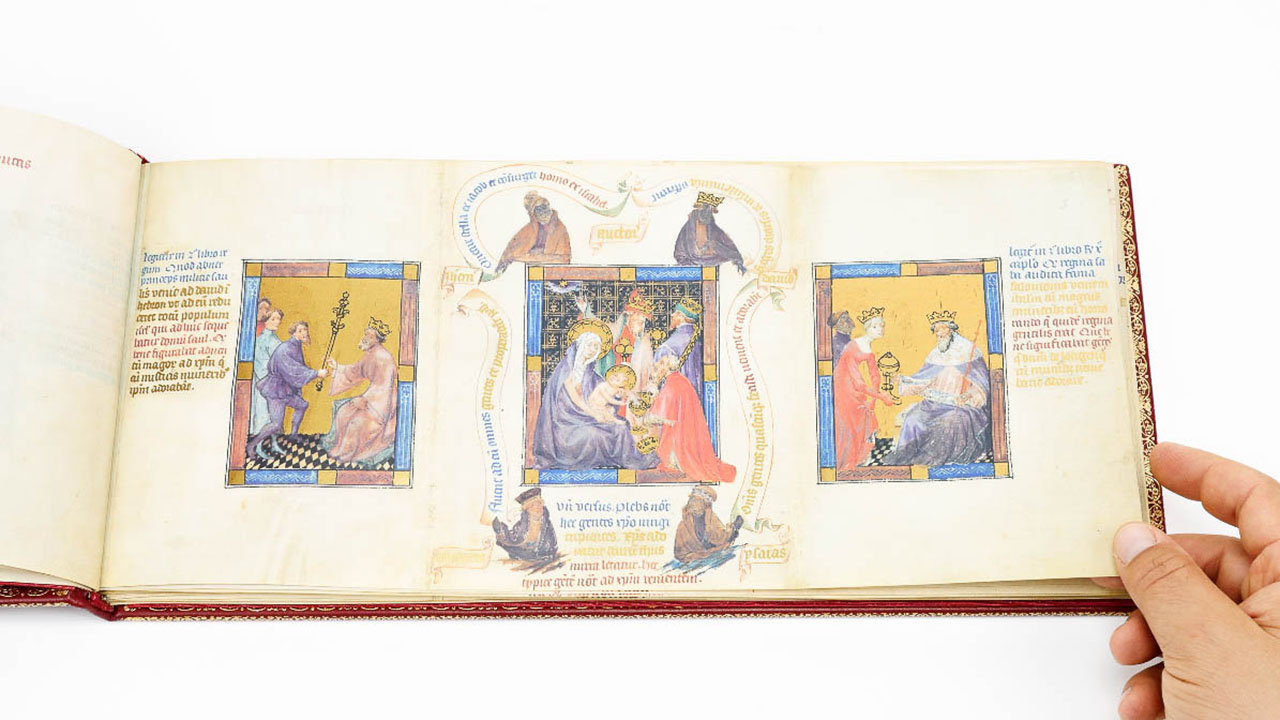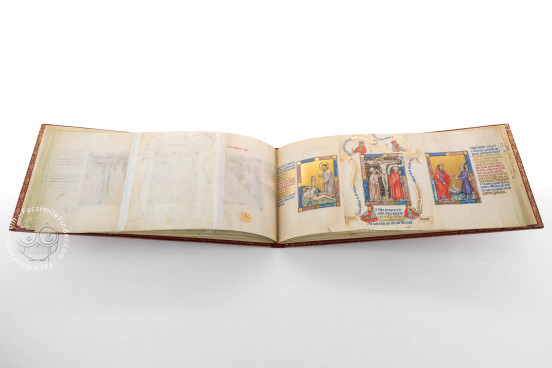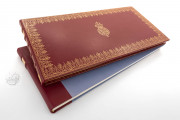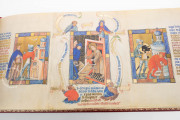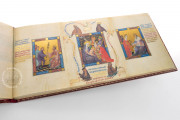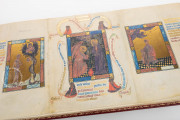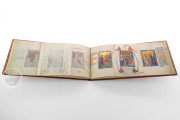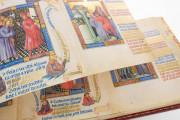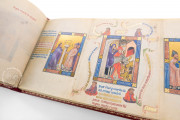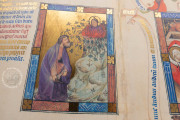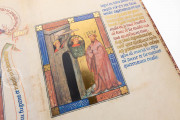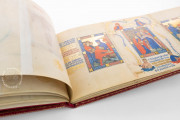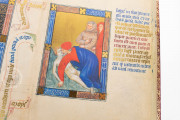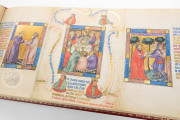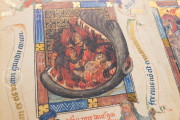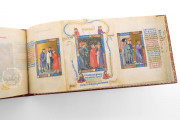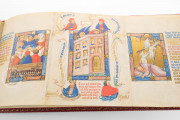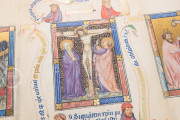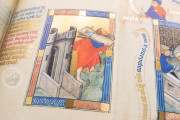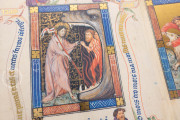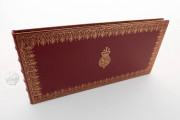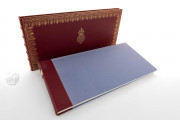Produced in the Netherlands, possibly The Hague, in the early fifteenth century (ca. 1400), this ornate "picture bible" is a one-of-a-kind example of innovative manuscript design and Gothic art. Also known as a Biblia Pauperum ("Bible for the Poor"), this codex is neither a bible nor for the poor. Indeed, given its lavish miniatures painted in striking hues of purple, red, blue, and gold, it is clear that this book was made for royals who wanted to meditate on the thematic relationships between the Old and New Testaments.
Each recto of the Golden Bible is dedicated to an event from the Gospels: the central image depicts a scene from the New Testament, while the two framing scenes are from the Old Testament and prefigure the central miniature thematically. Folio 11r, for example, portrays the selling of Joseph on the left, the selling of Christ by Judas in the middle, and the selling of Joseph to Potiphar on the right. Each group of images is further connected by Latin leonine hexameters that appear beneath the central miniature.
A Sophisticated Design
The Golden Bible contains 93 images spread across 31 folios. The miniatures have been attributed to the Master of Hours of Margaret of Cleves, and are unusual in their painted rather than pen-and-wash style of illustration. Each miniature is ornately bordered, but the scenes occasionally extend beyond their tight frames (King Darius, fol. 7r; the beheaded prophet, fol. 13r; Gideon's sacrifice, fol. 25r).
The Golden Bible's layout is unique to any other surviving codex. Each leaf was originally folded into three parts, with sewing between the first and second miniatures so it could be easily folded, thereby giving the illusion that The Golden Bible was a normal codex.
Multi-colored Script
The entire manuscript is written in a well-executed Gothic Quadrata script with a controlled x-height, frequent biting, and clear serifs on both the tops and bottoms of each letterform. The lines of text alternate between blue, gold, and red throughout the codex.
A History of Royal Readers
The Golden Bible was thought to have been made for Margaret of Cleves, the Duchess of Bavaria-Straubing (b. 1375, d. 1411). A sixteenth-century hand writes "alexander Radclyff boke" on fol. 1v and offers a clue to the manuscript's next known owner, and the initials "E.H." appear not long after on folio 17v.
King George III (b. 1738, d. 1820) inherited The Golden Bible from either his father or grandfather before donating it to the British Library in 1823, where it currently resides.
Binding description
Binding
The binding, while not original to the manuscript, is a beautiful gold-tooled and red leather binding that was likely added in the middle of the eighteenth century. Both the front and back covers are stamped with the arms of either King George I or II.
We have 1 facsimile edition of the manuscript "Golden Picture Bible": Goldene Bilderbibel "Biblia Pauperum" facsimile edition, published by Faksimile Verlag, 1994
Request Info / Price
